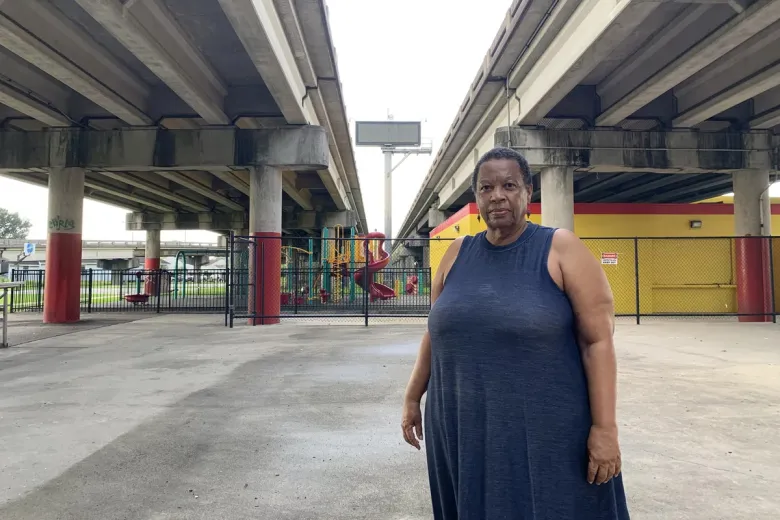A New Orleans Community Confronts the Racist Roots of a Toxic Highway
Share
Explore Our Galleries
Breaking News!
Today's news and culture by Black and other reporters in the Black and mainstream media.
Ways to Support ABHM?
By Drew Hawkins, KFF Health News
Fed up with air and noise pollution, residents of Tremé, one of the nation’s oldest Black neighborhoods, are working to get the Clairborne Expressway taken down.

Aside from a few discarded hypodermic needles on the ground, the Hunter’s Field Playground in New Orleans looks almost untouched. It’s been open more than nine years, but the brightly painted red and yellow slides and monkey bars are still sleek and shiny, and the padded rubber tiles feel springy underfoot.
For people who live nearby, it’s no mystery why the equipment is in relatively pristine shape: Children don’t come here to play.
“Because kids are smart,” explained Amy Stelly, an artist and urban designer who lives about a block away on Dumaine Street. “It’s the adults who aren’t. It’s the adults who built the playground under the interstate.”
Hunter’s Field is wedged directly beneath the elevated roadbeds of the Claiborne Expressway section of Interstate 10 in the city’s 7th Ward.
[…]
Stelly keeps a sharp eye on this area as part of her advocacy work with the Claiborne Avenue Alliance, a group of residents and business owners dedicated to revitalizing the predominantly African American community on either side of the looming expressway.
[…]
When it was built, the “Claiborne Corridor,” as it’s still sometimes known, tore through the heart of Tremé, one of the nation’s oldest Black neighborhoods.
For more than a century before the construction of the expressway, bustling Claiborne Avenue constituted the backbone of economic and cultural life for Black New Orleans. Back then, the oak-lined avenue was home to more than 120 businesses. Today, only a few dozen remain.
Learn more about the history of building free Black communities in the South.
Read about the revitalization of Tulsa’s Greenwood neighborhood.
Find more Breaking News here.











Comments Are Welcome
Note: We moderate submissions in order to create a space for meaningful dialogue, a space where museum visitors – adults and youth –– can exchange informed, thoughtful, and relevant comments that add value to our exhibits.
Racial slurs, personal attacks, obscenity, profanity, and SHOUTING do not meet the above standard. Such comments are posted in the exhibit Hateful Speech. Commercial promotions, impersonations, and incoherent comments likewise fail to meet our goals, so will not be posted. Submissions longer than 120 words will be shortened.
See our full Comments Policy here.